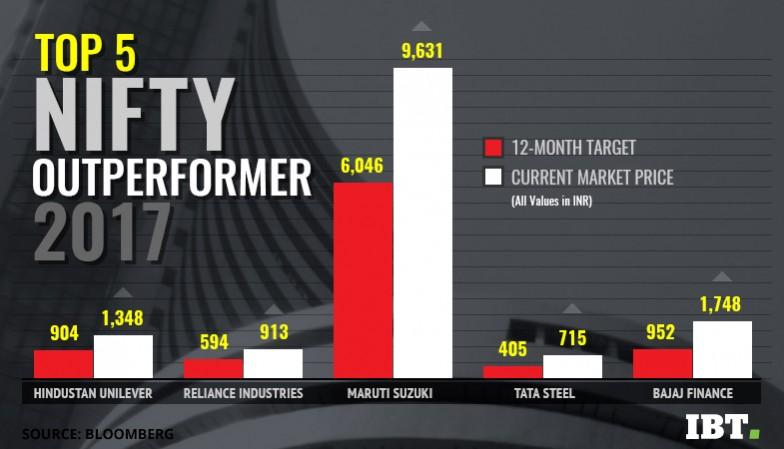
The benchmark Indian equities index, Sensex, lost a whopping 1,900 points since the beginning of February, before turning the corner on Monday with a 294-points gain. During the same period, Nifty shed more than 500 points but returned to healthier ground with an 84-points rise.
Have the markets shrugged off the bear cycle triggered by a collapse in the US equities on the back of surprisingly positive US jobs data? Was the latest correction a springboard from where the bulls will leap forward? Not quite so, going by some of the top global analysts and investors.
Another global rout is waiting in the wings, a top investor told Bloomberg Television. This panic sell-off is predicted to happen in March, around the Fed policy meeting on March 9. "As we go to the Fed meeting March 9, I think there will be more potential volatility weakness," Nader Naeimi of AMP Capital Investors Ltd, which manages $120 billion in funds, said.
He explains that heavy selling is often followed by a short period of recovery but in all likelihood the second leg of the crash will be more consequential.
"The plan is to buy in the second leg down, usually it's best to wait for the markets to build a base before committing heavily back into the buy side," said Naeimi, who is ready with a huge cash chest that will be used to buy into the markets at the dip.
Bottom fishing
The Sensex suffered its biggest fall in the latest bull cycle on the Budget day, dropping close to 900 points. The volatility continued in the following days, leading to a cumulative fall of another 700 points in the next three trading days. However, despite the absence of any positive cue, the markets looked up on the fourth day, recording a 331-points gain.
The bounce back was attributed to value buying, as investors felt the great correction had fairly levelled off the prices. This sentiment is also known as bottom fishing. According to Investopedia, a bottom-fishing investor "speculates that the stock's depressed price is temporary, will recover and make for a profitable investment."
If another sell-off happens in the US markets after the Fed meeting in early March, the Indian equities will feel the heat as well, given that the long-talked about de-coupling of the markets is still not a reality, and probably will never be. In which case, the focus will be on fundamentals and the valuations, which appear stretched in many sectors.
Globally, the presentiment of impending higher rates is too strong to be brushed aside. The market rally all these past several years was partly the result of the massive quantitative easing initiated by central banks after the recession. When the easy money is rolled back, the equity markets will also become less attractive as governments' better fiscal status will have a positive impact on bond prices and yields.
"Should yields march further higher -- which is quite possible with the upcoming US inflation and retail sales data to look forward to on Wednesday -- then there is a possibility the equity markets could be in for another volatile week," Forex.com analyst Fawad Razaqzada told AFP.
For Indian stocks, there is actually more to worry even beyond March. The RBI kept its policy rates unchanged in the last policy meeting but the April session is far more likely to see a rise in rates. A whole lot of factors signal a hardening of the inflation outlook -- post-budget spending, higher crop prices due to minimum support price (MSP), a projected rise in food inflation etc.

Sensex hit an all-time high of 36,000 points and Nifty breached the record 11,000 mark on January 23, 2018. Nine months before that, in April 2017 the benchmark index touched the then record 30,000-mark. So, between those two landmarks, investors took home an average of 20 percent returns.
Cautious outlook
However, the volatility and cautious outlook will force investors to take a harder look at valuations. This will in turn encourage the 'sell on rally; sentiment. And then, the focus will be back on fundamentals -- earnings, corporate profitability and the cost of borrowing.
In India, the ratio of corporate profits to GDP has been much lower than the levels in most advanced economies. India's corporate earnings to GDP ratio fell to 3.5 percent at the peak of the market. For comparison, in the US markets, which logged a similar boom as India, the corporate profits were at a healthier 9 percent of GDP.
The numbers from the October-December 2017 earnings period aren't very encouraging either. According to a Business Standard report, the combined net profit of the 1,395 companies was up 10.6 percent year-on-year, compared with 28.6 percent growth in the same period in the previous year.
"Everyone has to deal with a globalised connected world. The markets get impacted by exogenous and indigenous factors. What is happening right now is due to external factors. The volatility may continue for some more time," Securities and Exchange Board of India (Sebi) Chairman Ajay Tyagi said last week.
"The markets next week will focus on earnings, macro-data and, of course, global cues," Devendra Nevgi, Founder and Principal Partner, Delta Global Partners, told IANS.

















